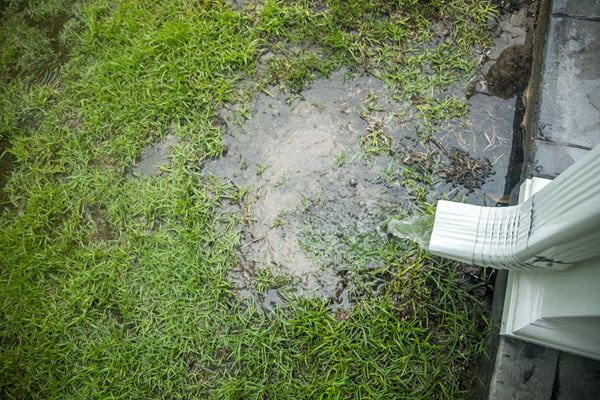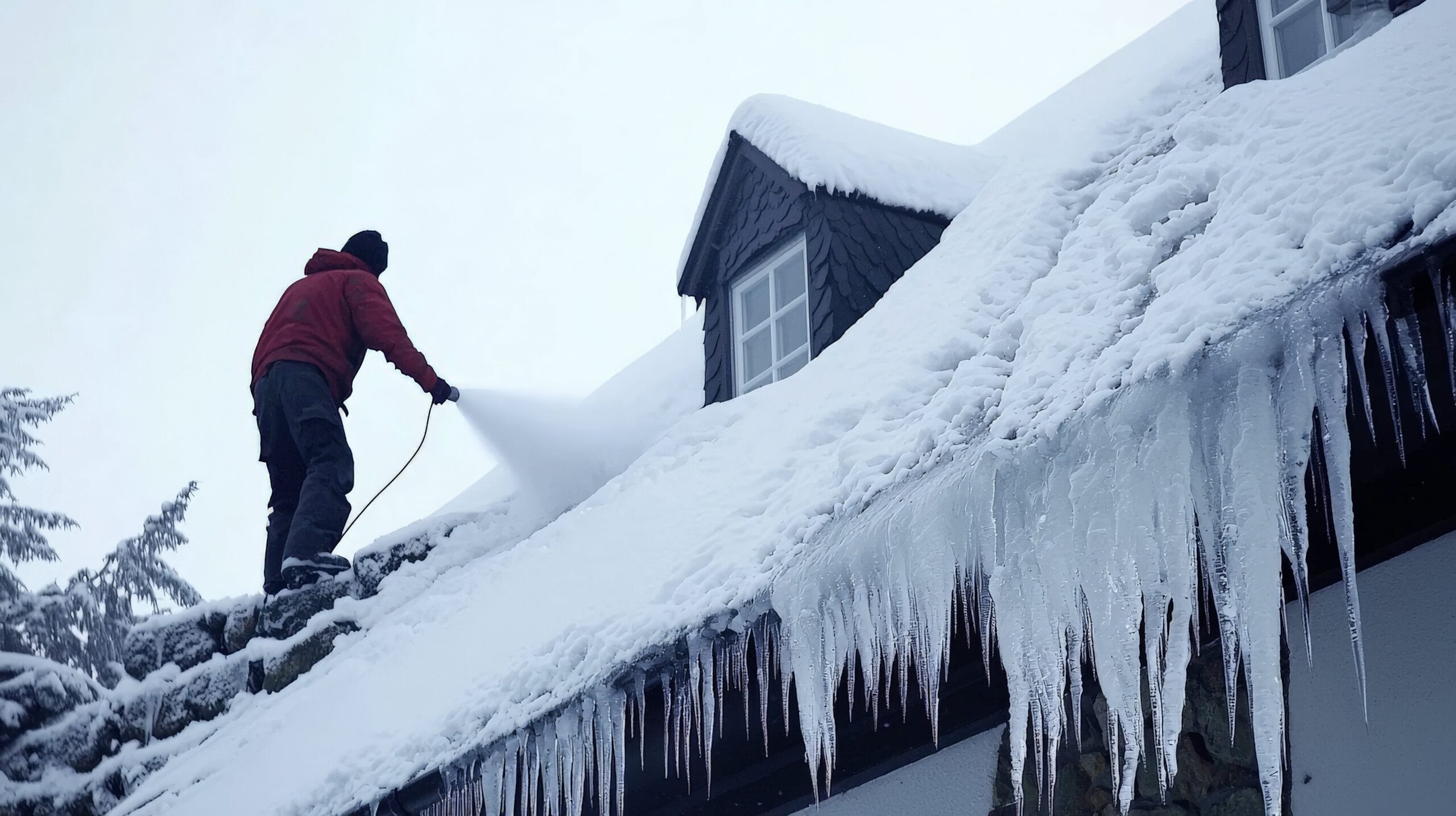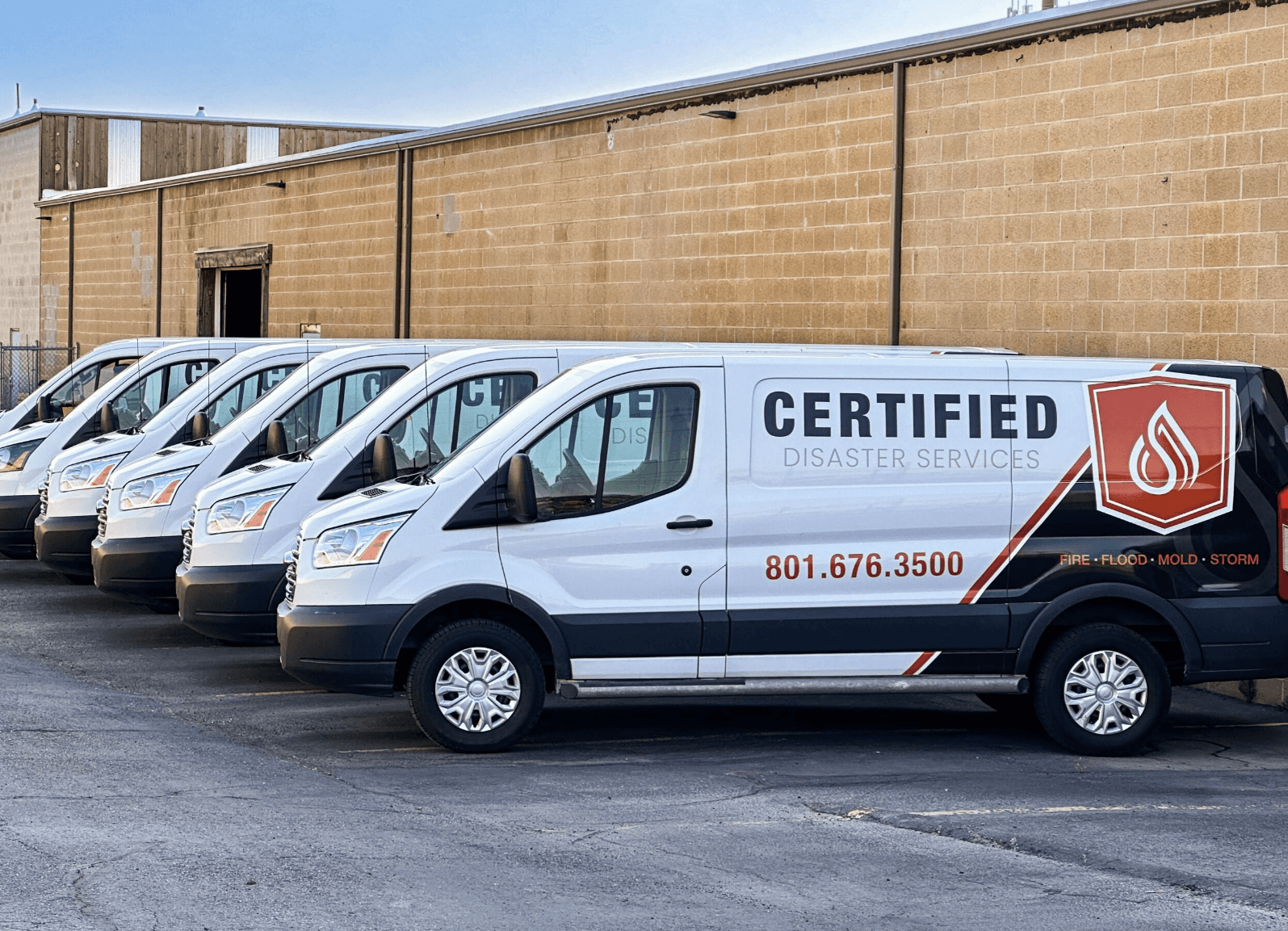Water damage usually comes from an obvious source and causes easily noticeable effects, such as standing water in the basement or a soaked carpet. However, there are also times when water damage can sneak up on you.
Here are our top five common yet sneaky sources of water damage.
1. Refrigerator Water Line
Refrigerators with water lines in the door are extremely useful — they let you have the convenience of a cold water dispenser and an ice maker without having to open the doors. Additionally, refrigerators with in-door dispensers often offer better-tasting water, thanks to added interior filter systems.
However, having a water line for the door dispensers can be a sneaky source of water damage.
A small but prolonged leak on your refrigerator water line can potentially soak your drywall and warp your kitchen baseboards. In worst-case scenarios, you may have to deal with a flooded kitchen and damaged subfloors.
Causes of Leaks
Poor installation and faulty piping can cause leaks and other serious problems in the future. Aging water lines may crack over time, as well, causing them to leak. Moreover, the refrigerator water line inlet valve may loosen up or become clogged.
Should any leaks go undetected for an extended period of time, the stagnant water can become a breeding ground for germs, bacteria, and mold.
Mold thrives in cold areas. As such, there is a chance that mold can spread inside your refrigerator and contaminate your food. This presents a major health hazard for you and your family.
Preventing Water Line Leaks
Make sure to regularly clean and check the water line for possible leaks. The water line inlet valve is located at the back of your refrigerator, usually near the bottom.
Additionally, check the material of your water line. If your refrigerator has a plastic water line, you are more likely to experience water damage due to cracked, clogged, and leaking lines. If possible, see if you can switch to flexible copper water lines or braided stainless steel lines for better durability.
2. Stand-Up Showers
Bathrooms and stand-up showers are some of the most-used parts of our home. The shower pan — the large porcelain, ceramic, plastic, or metal floor of the shower stall — can potentially fail and lead to leaks.
Unfortunately, though, a shower pan or drain leak is easy to miss. Since it is normal to find patches of water around your shower after bathing, you might dismiss leaks as water dripping off your hair or body.
Shower pan leaks can damage your bathroom’s flooring. The grout between tile floors is susceptible to water damage, so excessive and stagnant amounts of water can cause the tiles to lift from the floor.
The leaks can also cause mold, which thrives in the humid bathroom environment.
Causes of Leaks
Regular use and constant wear and tear can potentially cause the shower pan, the drain, or your shower water line to fail and leak. A faulty drain or faucet can also cause leaky shower stalls.
Your shower pan or flooring will naturally deteriorate over time. Moreover, if you live in areas that are prone to earthquakes or excessive flooding, your shower pan can potentially shift and move. This can cause cracking and leaking.
Preventing Shower Pan Leaks
Proper cleaning and maintenance of your bathroom may help keep shower pan leaks at bay. Wiping up the water on the floor after your bath can also help you see whether the water is from a leak or not.
Keep a close eye on your flooring for any signs of leaks or water damage.
Here are some common signs of shower pan leaks:
- Loose floor tiles or peeling grout near the shower stall
- Soggy toilet rugs
- Soggy carpet areas in rooms connected to the bathroom
- Water-stained baseboards
- Mold growth
3. Sprinkler Systems
Outdoor sprinkler systems can make your life much simpler, especially during the hot summer months. It makes it much easier to grow grass, flowers, and trees.
As useful as sprinklers are, though, they may also cause problems for your home. Sprinkler systems are likely to break, particularly below the sprinkler head. This can make it difficult to check and discover possible leaks.
State laws and recommendations regarding sprinkler use can also add to the challenge. Here in Utah, we are encouraged to run sprinkler systems at night or in the early morning to prevent evaporation and conserve water.
However, letting your sprinklers run automatically means you won’t notice potential issues and damages.
Causes of Leaks
Constant use and high water pressure can cause your sprinkler heads to wear out over time. Extreme weather conditions, such as thunderstorms and the winter season, can also greatly damage your sprinkler system.
Some sprinkler systems may also be supplied with water through a hose bib or small outdoor faucet. Hose bib connections can freeze over winter and have cracks and leaks by the time spring or summer comes.
One possible sign of a leak in your sprinkler system is a sudden, unexplainable spike in your water bill. Another visible sign is a dry landscape or dry patches in your garden.
Preventing Sprinkler System Leaks
Repairing sprinkler systems can cost as much as $850, depending on the problem. Regular maintenance and checks may be a challenge, but it is your best way to prevent more costly repairs.
Make sure to conduct a post-winter check of your sprinkler system. Even after winterizing your sprinklers, it may still develop frost or freezing damage that can cause cracks along the pipes or head.
Check your hose bibs as well. Hose bibs are more likely to leak when not in use, so make sure to observe the faucet for a couple of minutes after turning it off.
4. Swamp Coolers
Swamp coolers or evaporative coolers are a great way to cool the air, especially in areas with warm climates and low humidity. These machines can also help you lower your energy bill as they are more cost-effective than other air coolers or air conditioners.
On the downside, though, swamp coolers can leak and cause water damage. If you have a swamp cooler installed on your roof, the leaking water can cause your roofing material to age and deteriorate faster.
If so, aside from calling a repairman and a water damage restoration team, it may be better to bring your swamp cooler down. This would also allow you to conduct maintenance checks more often and easily.
Causes of Leaks
One of the most likely causes of leaks in your swamp cooler, and many other machines or devices, is a loose water line. Swamp coolers often have copper water lines that can age and loosen over time, especially when in constant use.
There are several other causes of leaking swamp coolers, including:
- Crooked or wrong sizes of water-saturated pads
- Broken or incorrectly placed float valve
- Cracked water reservoir
Preventing Swamp Cooler Leaks
As with any machine, proper maintenance is crucial to keep your swamp cooler running efficiently and effectively. Another way to help prevent leaks is to ensure you winterize your swamp cooler, particularly if it is placed on your roof.
Additionally, make sure to check and change the water pads of your swamp cooler regularly. This will also keep your swamp cooler running properly.
5. Rain Gutters
Rain gutters are prone to blockages, especially if you have high trees near your home. When this happens, it isn’t just your gutters that will suffer damage — the clogged gutter may cause water to get into your roof, basement, foundation, and walls.
Blockage and standing drain water can get heavy and cause the following to your rain gutters:
- Sag and hang loosely
- Completely disconnect from your roof
- Crack or bend
- Develop rust
Aside from the potential damage to your home foundation and exterior, the standing water in your gutters can be a source of disease-ridden mosquitoes, bacteria, and mold accumulation. It’s critical for the health of home occupants and the value of your house to get mold removal done immediately. Black mold, or Stachybotrys, is often referred to as toxic mold.
Causes of Leaks
Rain gutter blockage issues are commonly caused by trapped leaves, branches, and other debris. The blockage may also be caused by clogged downspouts.
You will need to check and make sure the downspouts are free from any debris or ice so that the water passes through properly.
Using sharp garden tools, such as a garden hoe or rake, can potentially damage your gutter as well. If used improperly, you may cause gashes and cracks as you clean up the gutter.
Preventing Rain Gutter Leaks
Preventing rain gutter leaks and water damage is very simple — all you need to do is keep it clean. Make sure to regularly clean up your gutters, especially during the fall season and after heavy rainfall.
You also need to do proper maintenance during winter to prevent ice dams, icicles, and clogged downspouts from forming.
Constant Vigilance and Maintenance
These five silent and sneaky dangers are just the tip of the iceberg. You will need to remain vigilant with any appliances connected to your water supply, including a water heater, washing machine, water softener, and water filtration systems. Proper and regular maintenance goes a long way towards preventing serious water damage to your home.
If you do catch the leaks and water damage late, make sure to seek professional help from the experts at Complete Restoration in Salt Lake City — not only for repairing the leaks but also for restoring your water-damaged home.





